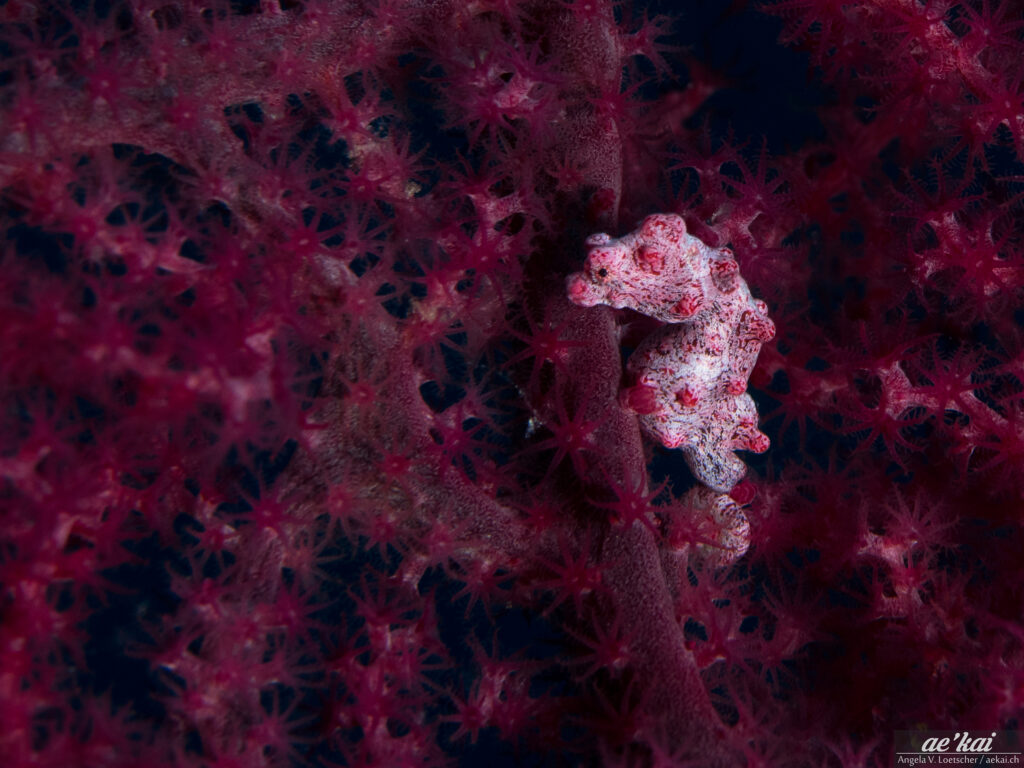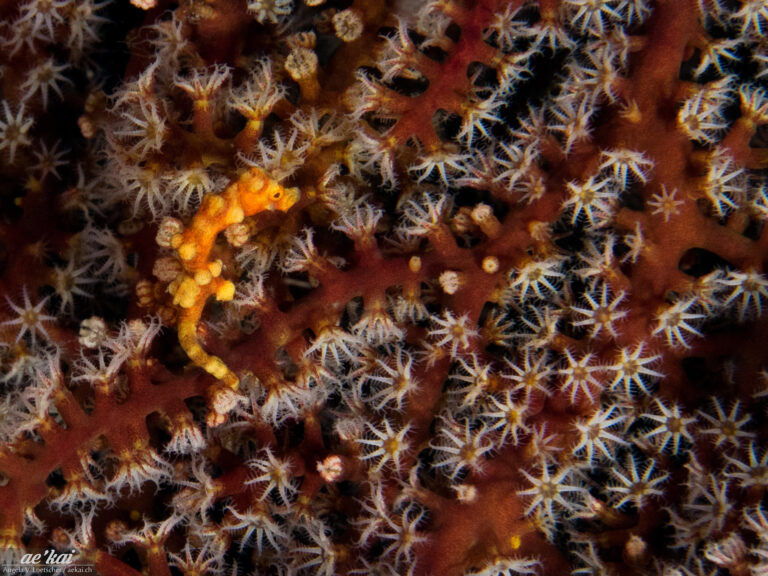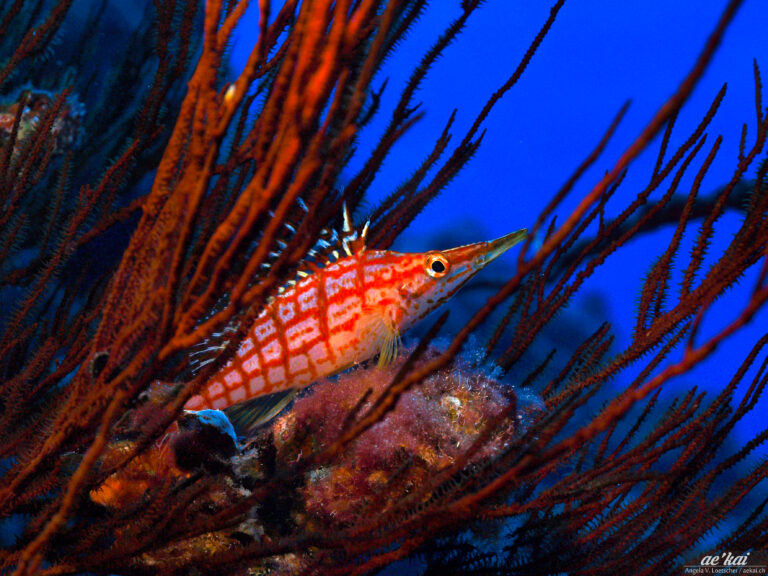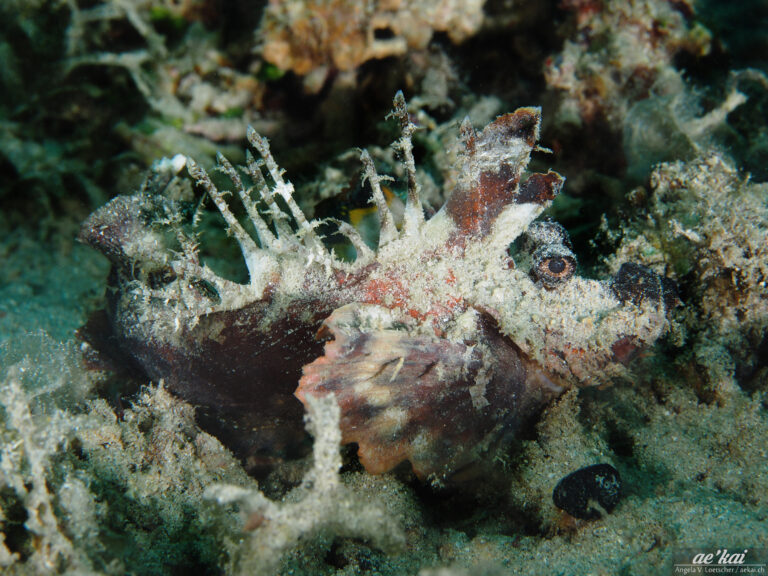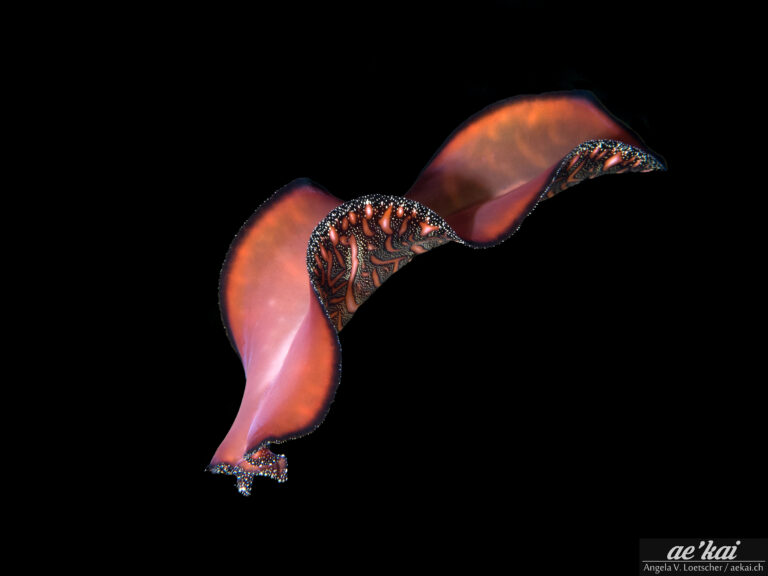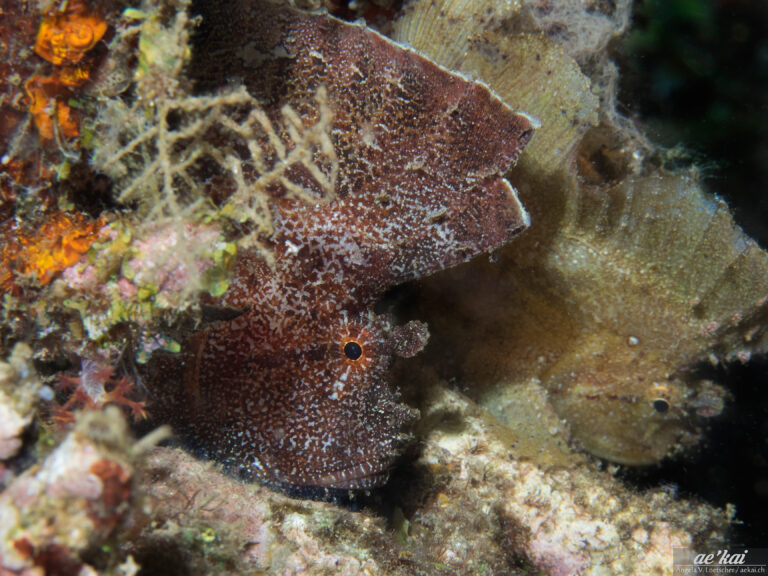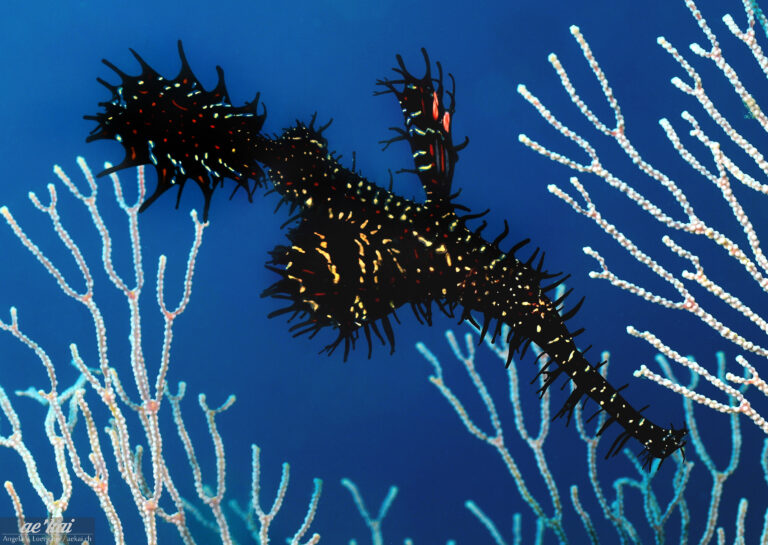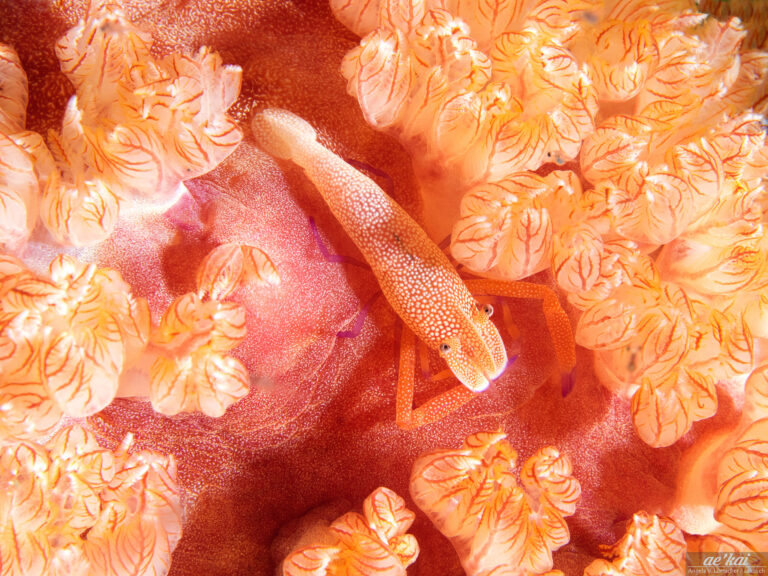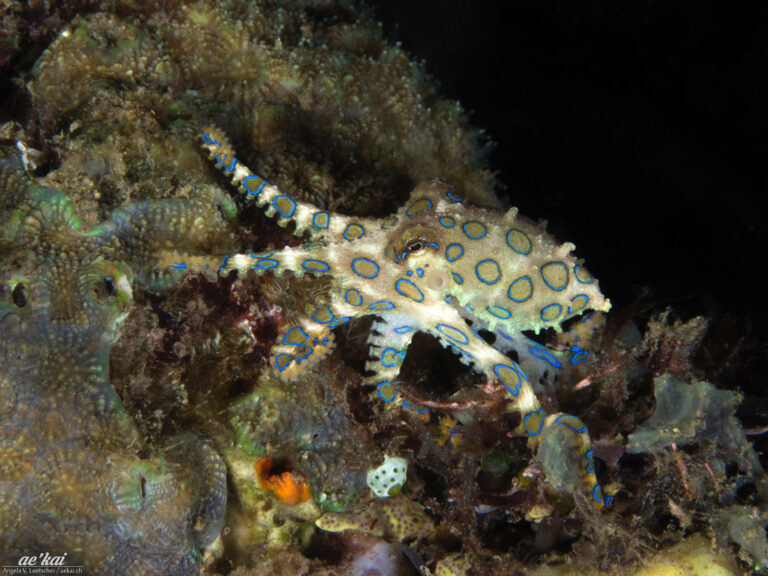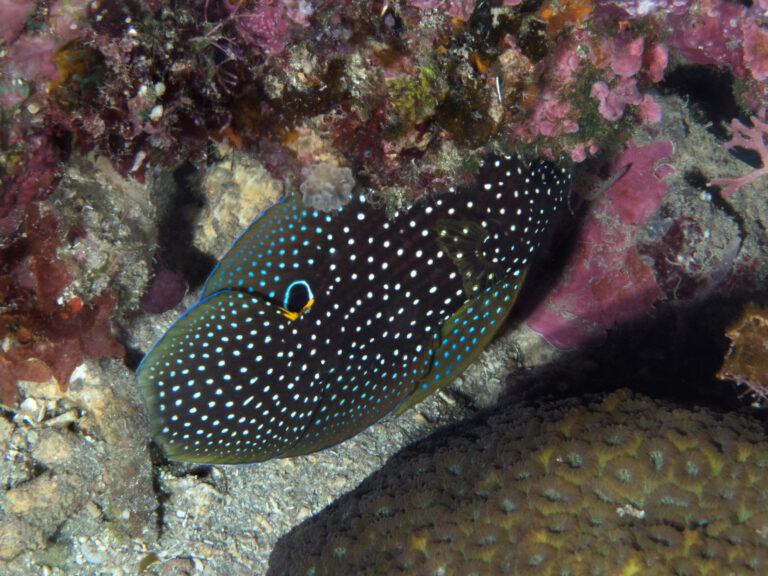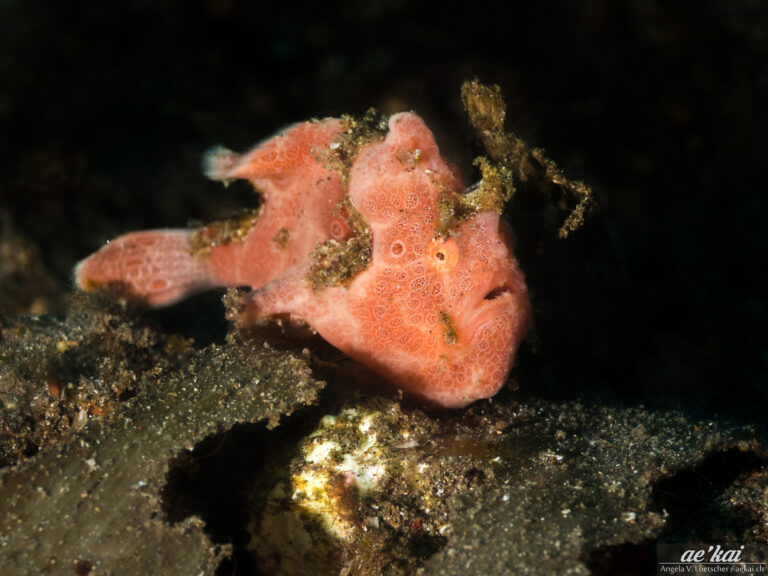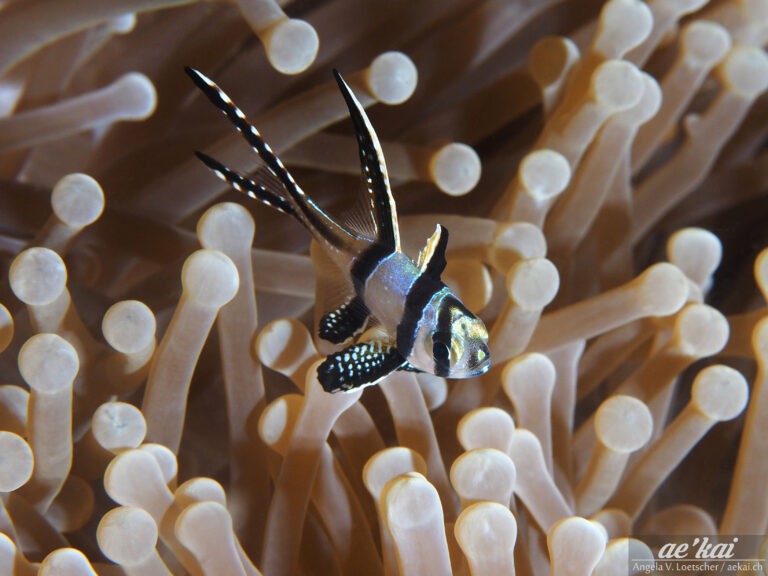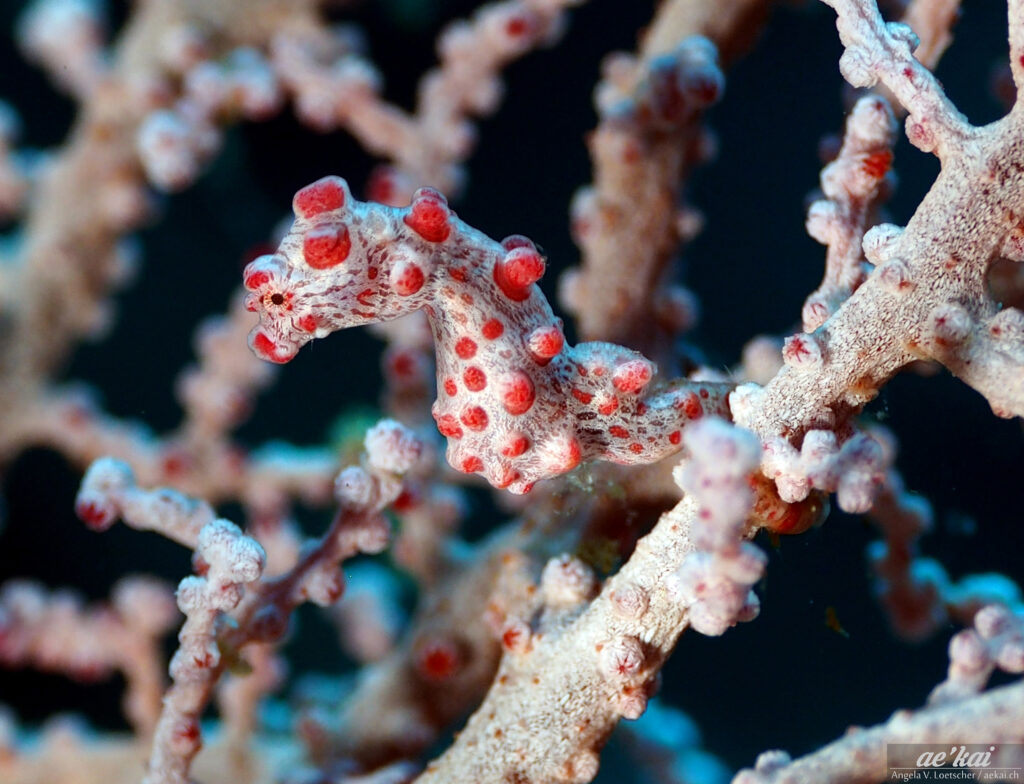
EN: Bargibanti‘s Pygmy Seahorse | Bargibanti‘s Seahorse | Pygmy
DE: (Bargibanti) Zwerg-Seepferdchen | Pygmäenseepferdchen
Family
Pipefishes, Pipehorses and
Seadragons (Syngnathidae)
Size
approx. 2,4 cm
Diet
Small
Crustaceans
Distribution
Western Central-Pacific
This species of pygmy seahorse was the first to be discovered, and therefore was simply named Pygmy Seahorse or Pygmy. However, since several species of pygmy seahorses have since been found and described as different species, this species is now called Bargibanti Pygmy Seahorse.
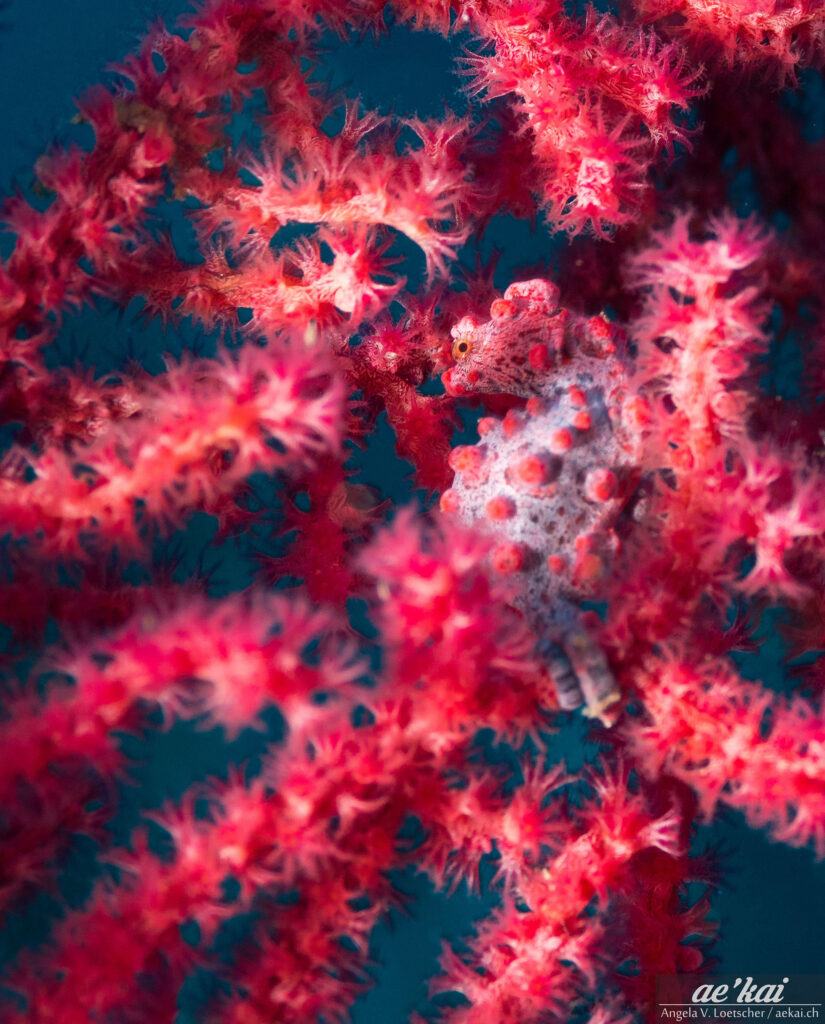
These very small seahorses live highly specialized on gorgonian fans of the species Muricella (M. plectana & M. paraplectana) at depths of 15-40 m, where they are so well camouflaged with their appearance that they were only discovered by chance in 1969 while examining a gorgonian in the laboratory. The discoverer was a New Caledonian scientist named George Bargibant and so the little animal was named Hippocampus bargibanti after him by Whitley in 1970. Bargibantis, like all seahorses, belong to the pipefish family, which also includes pipefishes, ghost pipefishes and sea dragons. They feed on very small crustaceans.
Bargibantis reach a maximum length of 2.4 cm. The pinkish variants have a grayish-pink body color and are covered with reddish-pink tubercles that imitate the closed polyps of the gorgonian. In the yellowish variants, the body is more pale yellow and the tubercles are orange-yellow. The color is always matched to that of the gorgonian on which they live. However, whether they can change color if they were to change gorgonians is as yet unknown.
For a true pygmy species, Bargibantis have the largest distribution in the world, the Western Central Pacific, from Southern Tropical Japan, to the Philippines, Indonesia, East Palau, Papua New Guinea, Solomon Islands, Fiji, Vanuatu, and the Great Barrier Reef in Australia. Dependent on their gorgonians, bargibantis live on current-rich reefs and slopes. Bargibantis have a fleshy head and body.
The googly eyes and the short snout, which reminds a bit of a kissing mouth, give the Pygmys a bit of a cute baby face. Their tail is especially good for grabbing the gorgonian branches. This is called a coiled tail. In Bargibantis, the gill openings are fused into a single exit opening centered on the back of the head.
Behavior
Bargibantis always occur as a pair and appear to be monogamous. As with all seahorses, males, not females, become pregnant and carry the brood. For reproduction, the female deposits the egg mass into the male’s designated brood pocket in front by its abdomen. The male fertilizes the eggs received and incubates them over a period of two weeks. The up to 34 young hatch while still in the brood pocket and are then released into the water by the male.
The young are independent from the first moment in the wild and receive no further care from the parent. The current carries the young away, where they feed from the open water in dark coloration during their plankton phase. Once they settle on a reef, the color changes to match the gorgonian. The question remains here whether they selectively choose the gorgonian by color, or can actually change color.
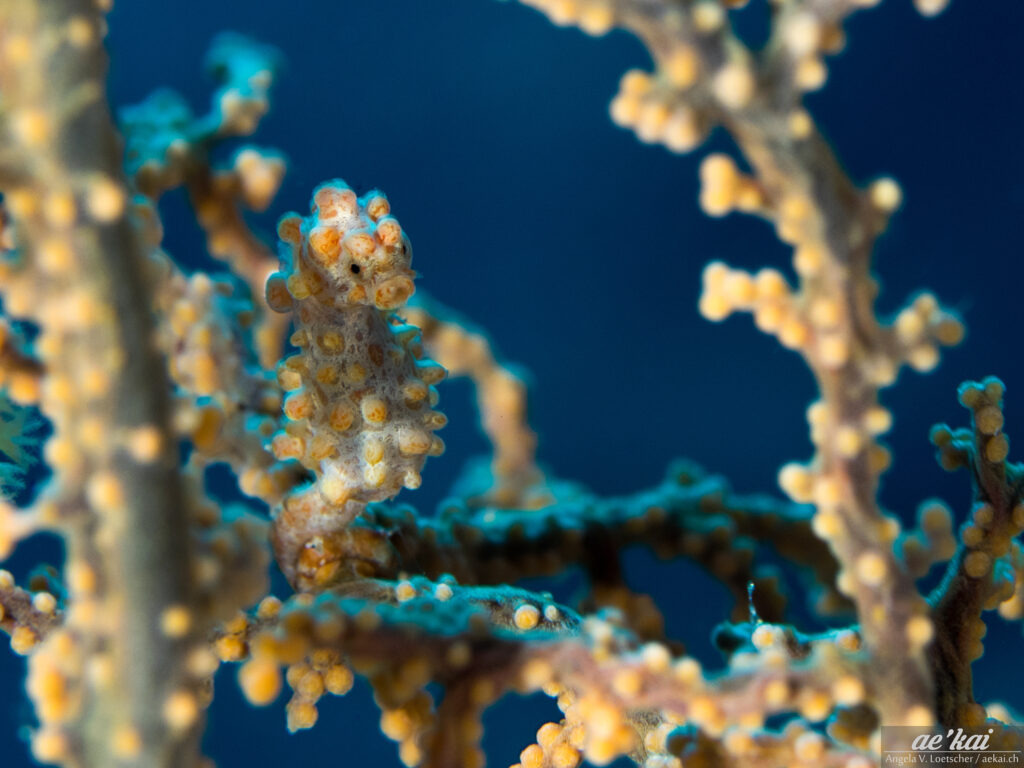
Warning
Pygmy in general are very fragile and their natural behavior is quickly disturbed. Therefore, no pygmy species or its gorgonian should ever be touched, as this has been shown to disrupt their behavior. Worst of all, however, is constant flashlight or strong lamplight, so the critters should not be exposed to too many photos or too much of prolonged viewing. Pygmies have been shown to go blind when too much flash is shined in their faces. Unless the dive guide sets rules, each diver should be committed to taking no more than 5 photos per photographer per gorgonian (even if multiple pygmys are present). If possible, it should be even less. It is recommended not to check any of the photos on site for quality, because this way you can avoid the temptation to take “just one more” after the other. Experience shows that even with 2-3 calmly, deliberately taken photos, you will easily have at least one that comes out well. However, no photo is worth risking a pygmy going blind.
